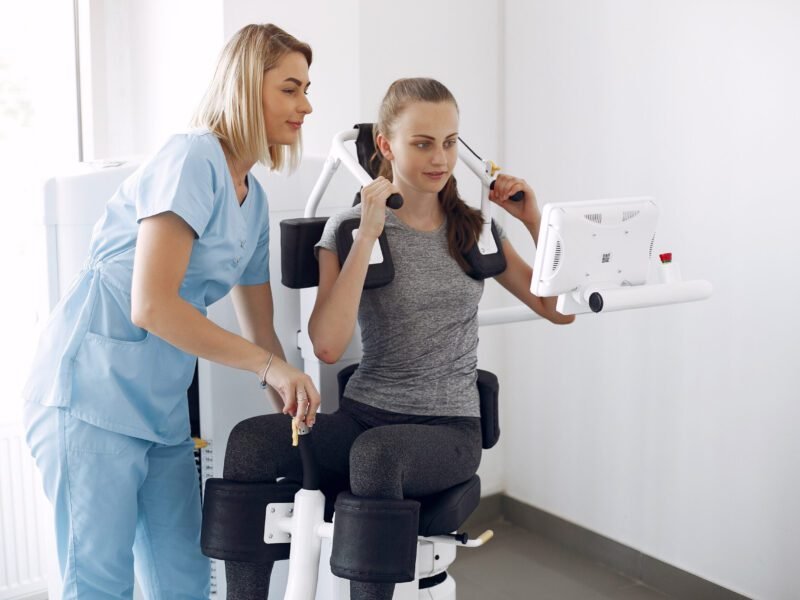
[ad_1]
We depend on our muscles to allow us to do all the functional activities we want to perform, from walking to climbing stairs to typing and doing precise work. Our muscles can deliver huge amounts of power and endurance as well as highly coordinated and skilled manipulations. Loss of feeling may be more important in a limb but loss of sufficient muscle power compromises our independence particularly as we get older and find difficulty performing routine actions for ourselves. Muscle power can be reduced by a large number of causes including not using them when ill and forced to rest, pain from injury or operations, stroke or other neurological condition, disease and illness. The assessment and treatment of muscle weakness is a routine skill in physiotherapy.
The Oxford Scale is the rating system used by physiotherapists for the assessment and recording of muscle power when required. Knowledge of muscle anatomy is vital so that the joint can be positioned correctly and the tendon and muscle palpated so whether there is any muscle action can be judged. The muscle is rated on the Oxford Scale from one to five and written down as 2/5 or 4/5, at times with a plus or minus sign to show the muscle has more or less strength but not enough to go down or up the scale. The physiotherapist ensures the joint is in the optimal position to enable the muscle to function easily and for easy visualisation of the tendon and muscle.
Grade 0 is no action discernible in the muscle at all, with the physiotherapist palpating the muscle belly or tendon as the patient attempts to perform the activity several times. Grade 1 is a twitch as the muscle undergoes a small contraction but is not strong enough to perform any of its specified joint movement. Grade 2 indicates a muscle strong enough to perform its designated joint movement when the force of gravity is eliminated, making it much easier to perform. The joint must be accurately positioned for this to be tested correctly. Grade 3 is a muscle strong enough to perform the joint action to the full range against gravity but with no resistance applied. An example here would be lifting the arm above the head.
If the muscle can move the joint through the full movement both against gravity and against some resistance such as body weight then the Oxford Scale grading is 4/5. It is a professional judgment as to the resistance to be applied for the test, and the physiotherapist will have in mind the health, age, activity and weight of the patient. If a muscle is to be graded 5/5 it must be of normal power, but as this will vary greatly between individuals the physiotherapist must make an estimation of the expected full muscle power for that particular patient. Grade 5 for a frail sick person will be very different from grade 5 for a young, fit sports person.
If the patient can raise their arm up above the head to some extent but not very strongly nor to full range, the physiotherapist might grade that as 3/5 for the deltoid muscle but because it is not full it might be rated 3-/5. If the muscle will take good manual resistance but does not appear to be normal for that patient then the grading could be 4+/5. This grading scale allows the physiotherapist to test all the appropriate muscles and record them in the patient’s notes, enabling progress to be charted against time as the strength improves. This can be very useful in tracking the progress of patients recoveries or recording their neurological status such as in spinal cord injury.
Muscle strengthening begins with encouraging muscle activity with gravity counterbalanced if the muscle is weak. Once a functional level of muscle activity is reached the patient can be encouraged to perform normal daily activities to power up their muscles. At a higher level resistance must be added as it is the intensity of work which develops muscle strength. This causes a breakdown of muscle fibres which regenerate with increased strength, a cycle which can be repeated with increased levels of applied intensity of resistance. Once simple resistance has been managed, the patient is taught to perform dynamic exercises using their bodyweight as this is the ultimate expression of muscle strength.
[ad_2]

